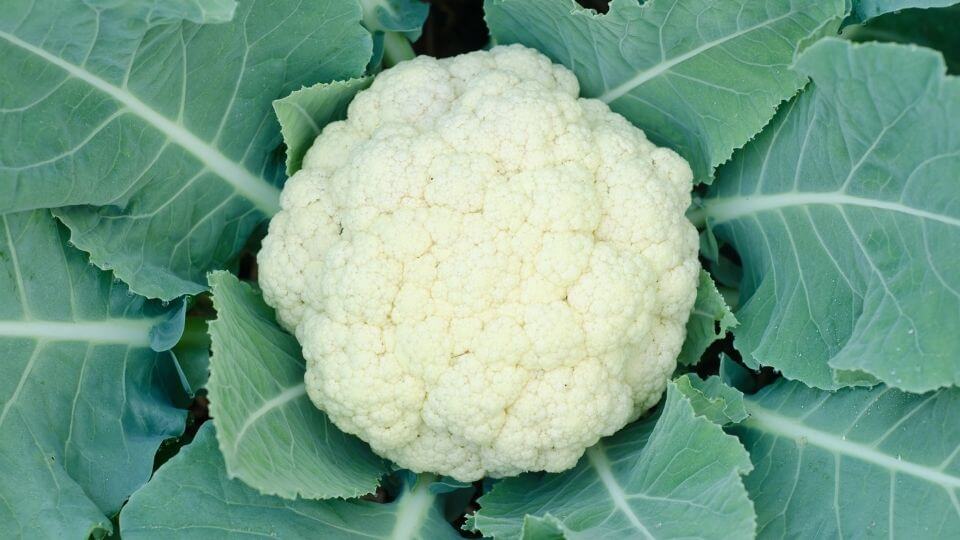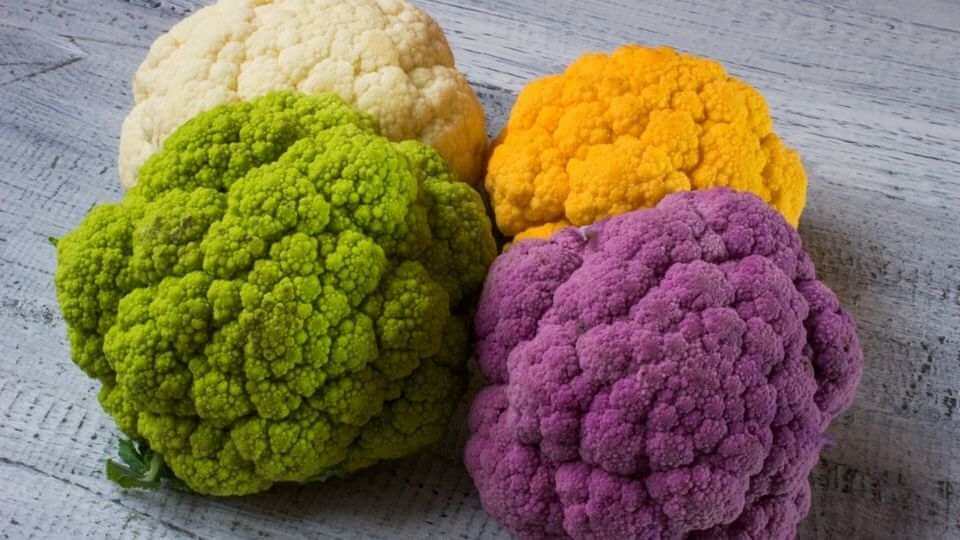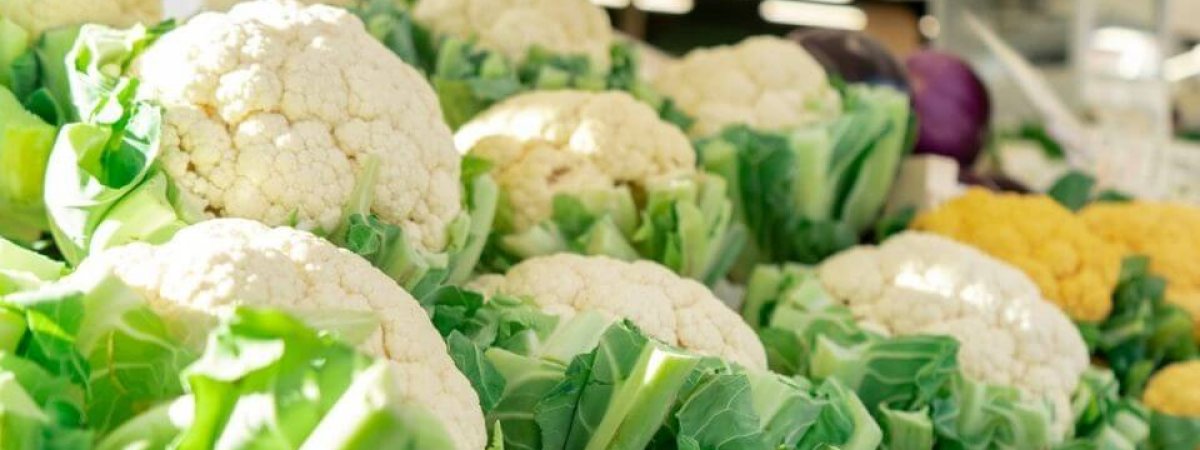Cauliflower is among the cool crops of the Botrytis group or cabbage-related family. It is a cruciferous vegetable that grows edible flower buds like broccoli, however, growing cauliflower is not an easy task. Why?
To start with, it is sensitive to sudden temperature changes and choosing the right variety is a tricky decision to make for many beginners. Nevertheless, we are here like always, to give you an insightful guide on how to grow cauliflower!
From choosing the right variety, understanding the growing conditions to learning the steps to grow cauliflowers, this guide has it all for you and more.
Let’s begin!
How to grow cauliflower?
When planning to grow cauliflower from seed, you get the option of choosing from a wide variety of the vegetable, such as white, purple, orange, and other varieties. We have discussed the varieties later in the blog.
For now, let’s know more about the cruciferous vegetable before getting to the steps to grow cauliflowers.
Cauliflower boasts its oval, thick leaves having mid-ribs and veins, which are also edible like the flower buds. The cauliflower head contains compactly packed flower buds, or as they are otherwise called curds.
The cross-shaped 4 petals flowers are the actual flowers of cauliflowers that gets them into the category of cruciferous vegetables. Cauliflowers prefer a cool climate for best growth, so it is suggested to plant these greens in early spring or mid-summers.
The planting time depends on your preferable time of harvest. If you want to have an early summer harvest, plant the seed in early spring. For a fall harvest, start planting cauliflowers in midsummer.

Planting cauliflowers
- To plant cauliflowers, choose soil that is rich in organic matter. You can go for mix aged manure or compost.
- It needs extra nutrients for growth. Add 5-10-10 fertilizer to avoid buttoning or the heads.
- For easy planting, you can get small nursery plants of cauliflowers.
- In case of planting cauliflower seeds, start sowing seeds four to five weeks before the date of last spring frost.
- Sow the seeds ½ inch deep and in rows distanced 3-6 inches from each other.
- Keep watering the plant regularly during the germination and growth of your cauliflower plant.
- When growing cauliflowers from small nursery plants/seedlings, transplant them 2-4 weeks before the date of last spring frost in your region.
- Set the plants 18-24 inches apart, and there should be a distance of 30 inches between the rows.
- In early spring, protect the plant from frost by using old mug jugs to cover them if required.
- Extreme cold climate can affect growth and result in the buttoning of the cauliflower heads.
- For planting a fall crop, sow the seeds 6-8 weeks before the first fall frost in the evening, when the temperature is below 75°F. If required, shade the plants from excess heat.
- Try mulching to retain moisture.
Harvesting cauliflowers
- Cauliflowers are mostly ready to harvest in around 50-100 days, based on the chosen variety.
- Typically, you can harvest cauliflowers 7-12 days post blanching.
- When you see the heads getting white, compact and firm, know that its time for harvest. The heads grow to a diameter of 6 to 8 inches.
- Take a large knife and cut the heads off. Keep a few leaves around the heads while cutting them off from the leaves to ensure protection.
- If your cauliflower plants have small heads and start opening up, better harvest them right away as they will not grow any more.
- Cauliflowers looking coarse reflect maturity and should be tossed.
Storing cauliflower
- After harvesting, store the cauliflower heads in a plastic bag in the fridge. They remain fresh for upto a week.
- To store cauliflowers for a longer period, freeze the heads or pickle them.
- Cut the heads into an inch small pieces. Blanch them for 3 minutes in salted water (lightly salted).
- Transfer them into a bowl of ice water to cool down for 3 minutes.
- Drain, seal and freeze them in the refrigerator.
Taking care of cauliflower plants
Light
- Cauliflower plants grow perfect in full light. However, partial shade on some days can also be good to prevent bolting of the heads in warmer weather conditions.
Soil
- Cauliflower demands soil with a high content of organic matter, and well-drained.
- The soil pH should be between 6.0 and 7.0.
- The plants require consistent moisture to avoid buttoning of heads.
Note: Buttoning is small flower heads growing in place of the large head.
Water
- As already said above, cauliflowers demand consistent moisture and a lot when it comes to the amount.
- When not watered well, the heads may get bitter. Water the plants weekly up to an inch.
- Ensure the soil soaks water up to 6-8 inches.
- When you leave the plant dry in summer, buds start opening which leads to ricey heads instead of the otherwise tightly packed curds.
Temperature and humidity
- By now, you know cool weather is the best for growing cauliflowers. But, remember it is sensitive to frost and sudden temperature fluctuations.
- Plant the cauliflower seeds or seedlings in spring or fall.
- Harvest them before or after summers (hottest climate).
- Add mulch while planting cauliflowers to maintain soil temperature and conserve moisture.
Fertilizer
- Cauliflowers take quite a long time to reach maturity. You need to provide them with supplemental feeding.
- Use an organic fertilizer like fish emulsion or kelp every 2-4 weeks to maintain the proper growth of the plant.

Varieties of cauliflowers
Some of the most common varieties of cauliflowers that gardeners and homemakers choose to grow, include:
Snow crown: It is among the easier-to-grow varieties. This white variety has got little frost-tolerance and is a short season crop. It matures in around 50-55 days.
Green goddess: These are lime green varieties that mature in 60-65 days. They do not need blanching and have a nice flavor.
Cheddar: It is varieties of cute orange heads that don’t bolt easily and mature in around 50-55 days.
Di Sicilia Violetta: Also named ‘Violetta of Sicily’, these are purple varieties with a nutty, sweet flavor. It matures in 70-80 days.
In a Nutshell
Cauliflowers are cruciferous vegetables that are not so easy to grow without proper guidance. We hope this piece on ‘how to grow cauliflower’ helped you get the most information on planting, harvesting, storing, and taking care of the plant.
You may also like to read
How to Grow Cabbages? Planting to Harvesting Explained
How to Grow Broccoli? Ways of Growing and Harvesting Broccoli at Home







One thought on “How to Grow Cauliflower? Start with Your Vegetable Garden at Home!”